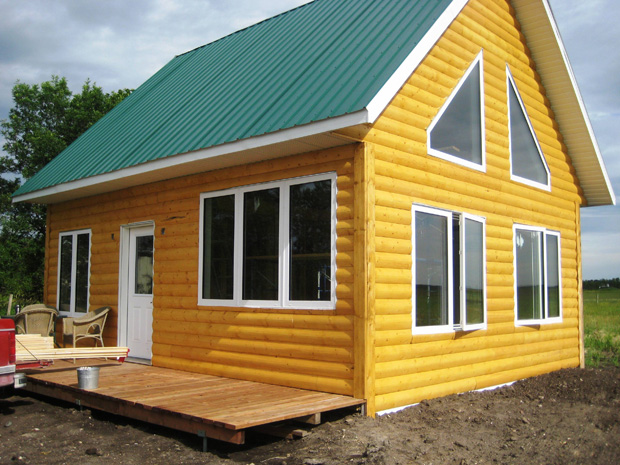I moved into my small house at the end of September so I am experiencing each season for the first time.
My house is 20 by 24 feet with a high cathedral ceiling and a loft 10 feet wide over the bathroom and mechanical room. I insulated the entire house with spray foam insulation, R60 in the floor and ceiling and about R32 in the walls.
My south and east facing windows represent about 10% of my floor space. On a sunny day at minus 25 degrees Celsius, I do not require any heating source except the sun. The total energy from the sun is approximately 1000 watts (1 kilowatt) per square meter.
My triple pane low-e Argon filled windows block some of the heat coming in but provide the best insulation at night or when it is cloudy. Solar gain is measured by a g-value or SHGC (solar heat gain coefficient). A value of 0 means no solar energy is transmitted by a material and a value of 1 indicates 100% of the sun’s energy is transmitted through a material, windows in this case.
My windows have a g-value of about 0.33. That means only 33% of the sun’s total energy is transmitted through the window as heat or about 330 watts per square meter of window. With my east and south windows totaling 13.7 square meters I receive about 4,300 watts (4.3 kilowatts or 14,700 BTUs) per hour of sunlight. That is more energy than I need to keep the house warm and the temperature rises to 25 degrees Celsius. At night a 1500 watt electric heater is just able to keep the temperature constant at an outside temperature of minus 25 degrees.
I have a high efficiency HRV that is labelled to recover 65% of the heat of the exhaust air at an outside temperature of minus 25 degrees Celsius. I used to leave the HRV running constantly but the relative humidity in my house was low at about 30% RH (I am obviously not making enough soups) so I turn off the HRV at night to try to raise the humidity a bit and to save the 35% loss of heat at night. During the day I can afford to lose that 35% but not at night.
I have yet to experience the hot summer sun but my southern overhang is adequate to keep direct sun out of the house and I intend to plant deciduous trees to the south of the house so that I have shade from leaves in the summer and sun through bare branches in the winter.




